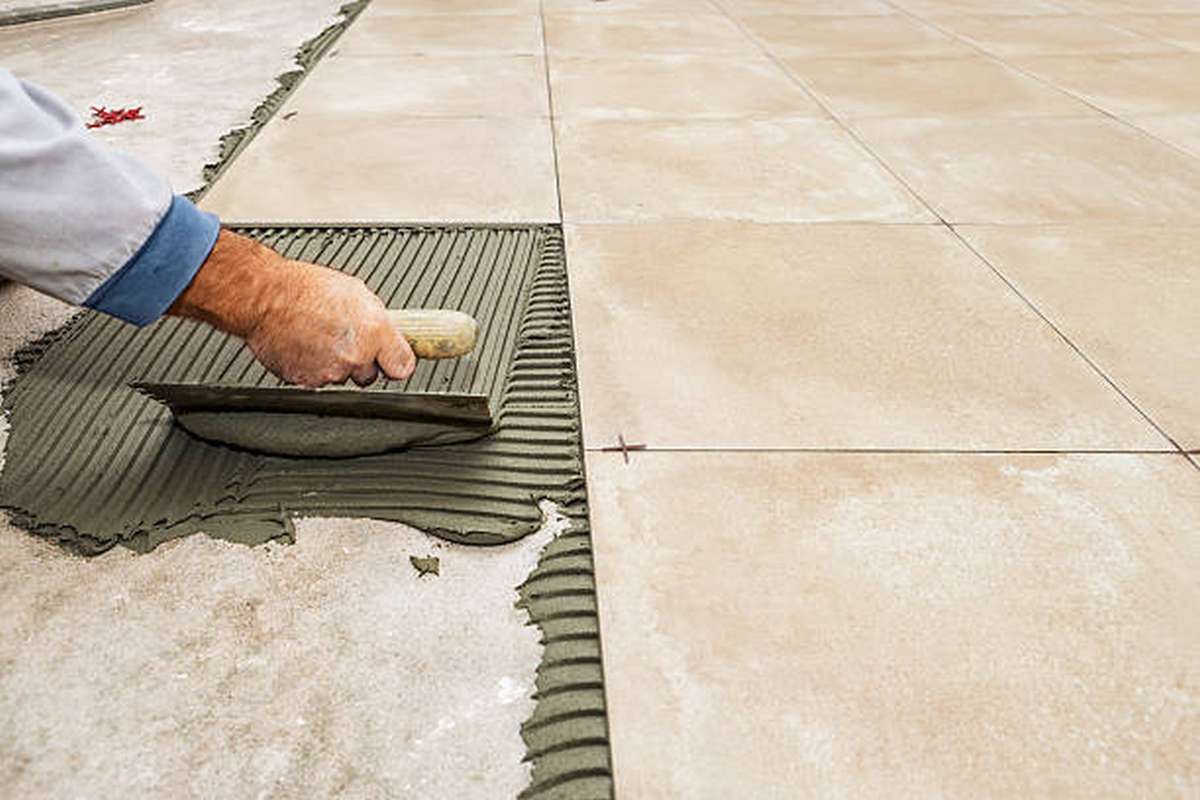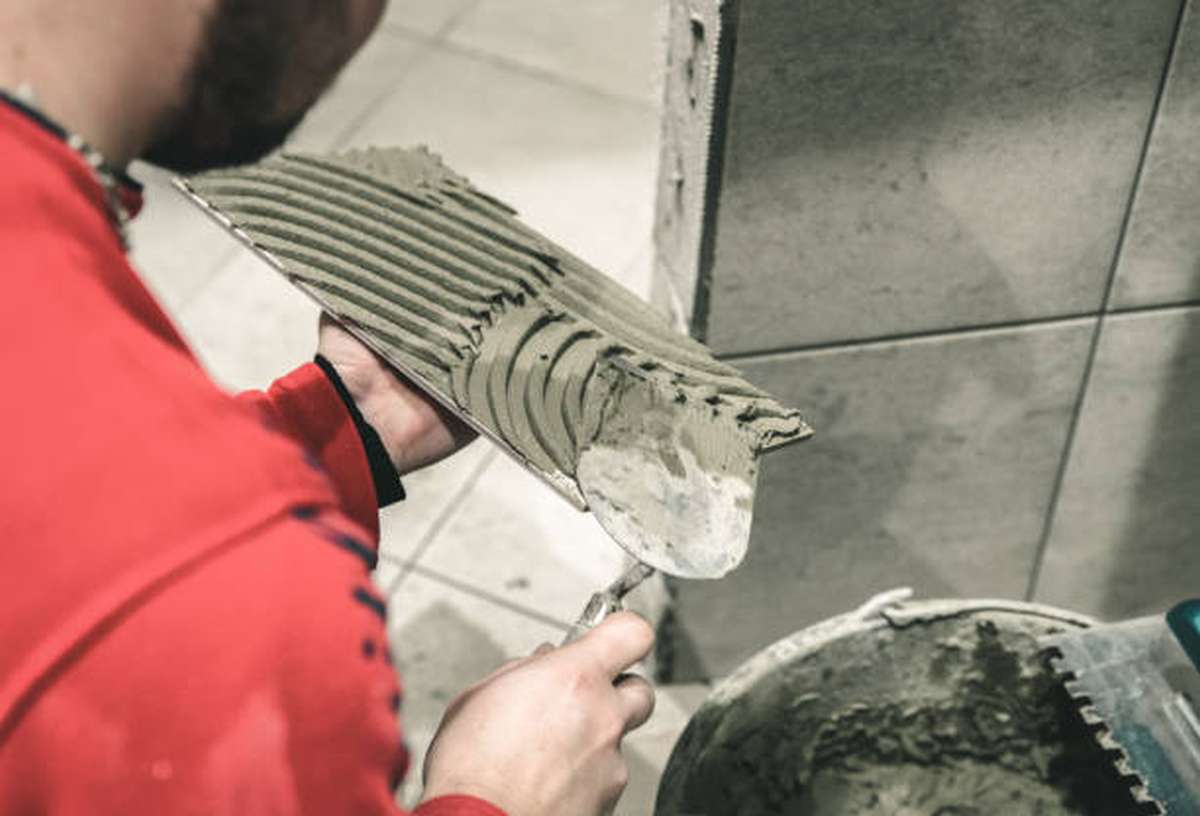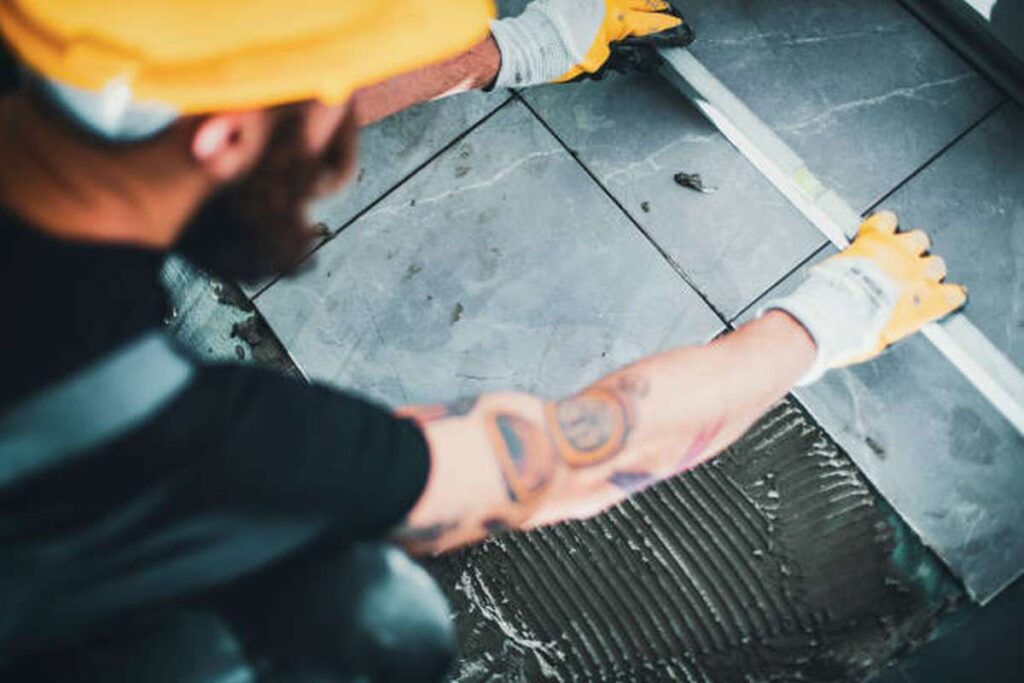The same criteria that apply to finding regular floor tiles also apply to finding tiles suitable for use with underfloor heating. Please choose textured tiles to improve traction on wet surfaces; larger tiles are preferable because they require less grout, which is a poor heat conductor.
Adding underfloor heating to your house can be luxurious, but finding the right flooring can be difficult. First, consider the function of the room for which flooring is needed. Wet floors in the bathroom and m, muddy paths to the front door and around the utility closet are commonplace in households with pets.
Because of their high thermal conductivity, which is how quickly and effectively the generated heat is transported to the floor surface, floor tiles are perfect for underfloor heating. Tile flooring is more cost-effective to heat and cool since it is quick to warm up and slow to cool down. The kitchen, bathroom, or conservatory temperature will no longer be an issue.
The versatility of underfloor heating means that it may be installed in any building, from brand-new construction to the renovation of an older, draughty home. The final step is to select tiles that complement your interior design. Looking for the best tiling renovations? Look no further! Hitch Property Constructions has you covered.
Considerations for Underfloor Heating and Tiling

In tiling across heated floors, there are a few factors to keep in mind before making a final decision.
The depth of a tile.
- However, most tiles can be used with an underfloor heating system. Heating a room with thicker tiles could take longer than thinner ones.
- Matrix for tiling.
- Even across tile materials, there is a wide variation in heat conductivity. For example, underfloor heating works best with ceramic or stone tiles because heat is delivered efficiently from the system to the tiles.
- Subfloor.
- Underfloor heating tiling requires a flat subfloor. Once completed, tiles can be laid directly over the UFH like a regular tile floor. Yet, a decoupling membrane is a must if you want to keep your tiles from breaking due to subfloor movement.
Can Ceramic Tiles Be Used Safely With Underfloor Heating?
The Building Assessment Establishment researched UFH systems. However, they only tested the more typical warm-water UFH.
A modest bathroom in a house we remodelled in 2006 was the first place we saw an electrical UFH system. The installation was a problem then, and it still is now. The heat pads and cables must remain undamaged for the system to function properly.
We think you're putting down money on a new house because you made a reservation. New construction, or construction in which an entirely new concrete slab was built, was the primary focus of the BRE paper's completion. According to the results at the time, "cracking frequently was caused by the mobility of the subfloor at a well before crack or, sometimes in instances, a 'day' joint in the screed." This phenomenon typically manifested within a few weeks after the heating system was turned on following installation.
The installation of the UFH system was not at fault; rather, it was a defect in the original concrete slab. You should consult with the on-site general contractor to check the build-up and type of hard slab they will be laying before relaying this information to the company providing your UFH. Depending on how quickly the sale closes, you may need to delay the installation of the new UFH system to give the concrete slab enough time to dry.
Tile is the go-to finish for UFH installations since it heats up quickly compared to alternatives. Yet, the rate at which the temperature drops from its maximum is also faster. Since this will be delayed when a Low volumes system is activated, it is not a particularly relevant factor in the decision. Natural, pottery, or terracotta tiling have all been good possibilities for indoor use, with price and taste being the primary considerations.
Finally, you should check that any system you choose comes with a quality guarantee and is installed by an authorised dealer.
How Effective Is Heat from the Floor?

We see under-floor heating as the wave of the future. However, radiators can be unsightly and a waste of wall space. In addition, there are other additional benefits:
- It warms the space evenly rather than creating hotspots near radiators, so everyone and everything in the room benefits from the heat.
- Better insulation makes it more cost-effective to heat and cool.
- Standard central heating systems improve indoor air quality by eliminating dust and allergens spread.
- The softest, most opulent sensation ever
Although underlay is important for any floor, typical carpet underlayment is not the greatest option for a heated floor system because of its cushiony appearance. This is because its primary function is not heat conduction but insulation and protection.
Thinner, lower-tog underlay is preferable for in-floor heating systems. The floor covering material you choose will also determine the underlay you need.
Stone & tiles are the most efficient materials for flooring from a thermal perspective. This is because they have the highest thermal conductivity and the greatest thermal retention. As a result, tile flooring is superior to other options in conduction or retention, with different varieties offering varying degrees of each. Further details on the finest tiles to utilise are provided below.
Engineered wood flooring comprises many layers of plywood and a solid wood top layer, totalling about 14 millimetres. If you're interested in wood flooring, the Millesime collection offers options up to a diameter of 14 mm.
It is favoured for its aesthetic value and resistance to floor temperature fluctuations. However, it's important to remember that wood can't withstand temperatures higher than 26 degrees Celsius.
Laminate and vinyl are less expensive than other flooring options and are frequently utilised in kitchens and bathrooms. In addition, high-quality lamination and floorings types are perfect for high-traffic areas of your home because they are heat-conductive, durable, and simple to clean and maintain.
Carpets with a tog rating of 2.5 or less can also be used. However, it's important to remember that carpet takes a long time to warm up yet keeps the heat in quite well. Due to this, carpet may not be the best choice for areas that use only floor heating. Check out Hitch Property Constructions for a huge Melbourne property maintenance services range.
Floor Materials to Avoid
Although the look of a solid timber floor is appreciated by many, it is not the best choice for use with under-floor heating. Because wood is a natural insulator and flooring is typically 18-22 mm thick, wood floors are not good heat conductors. When exposed to heat, wood expands; once the heat is removed, the wood contracts and may become warped. If this keeps happening, the wood may sustain damage that may be difficult to fix.
Because of its lower cost and lower environmental impact, some homeowners opt for cork flooring. Cork, like wood, is a naturally occuring insulator. This means that it would reduce the efficiency of your heating system if you used it instead. Either overexposure may damage the cork to electrical heat, which would dry it out, or to an overabundance of moisture, which would destroy it.
Some people may feel most at ease with extra-plush carpeting. A thick pile carpet, however, is not conducive to underfloor heating systems. If you have already decided to install carpet, the combined tog rating of the underlay and carpet shouldn't exceed 2.5. The heating system will not work as well if the temperature rises over this.
What Kinds of Stones and Tiles Are Ideal
Stone and tiles, as was noted before, are the best thermal conductors and heat retainers. Yet, there are a plethora of tiles from which to choose; which ones are ideal for your needs?
Slate - Slate is highly robust, making it an excellent material for heavily trafficked locations. Slate is an excellent material to include in underfloor systems due to its high conductivity.
Marble is a beautiful material, but it takes longer to heat up than other tile options. We suggest giving this a lot of thinking because natural marble is also relatively tough to maintain. Instead, you may use a porcelain tile that looks like marble.
Granite: a natural stone that stands out for its beauty and versatility in design. It's a good and practical option for a floor. But it tends to crack. So when selecting if granite is perfect for you, we advise learning as much as possible about your options.
Another hardy tile option is porcelain, which is non-porous and, therefore, resistant to stains. One of the thinnest tile options, porcelain works great with radiant floor heating systems.
Tiles made of ceramic have many of the same qualities as those made from natural stone. Ceramic tiles are a popular substitute for genuine stone and slate due to their thin profiles, which allow for efficient heat transfer.
Flooring made of polished concrete is an excellent heat conductor because of the material's high thermal conductivity. As its popularity has grown, concrete has found increasing use in both commercial and residential construction. Hitch Property Constructions offers carpentry services in Melbourne for residential and commercial projects.
Conclusion
Underfloor heating requires a flat subfloor and a decoupling membrane to keep tiles from breaking due to subfloor movement. Heat from the Floor (UFH) is the wave of the future, but radiators can be unsightly and a waste of wall space. It warms the space evenly and is more cost-effective to heat and cool. Carpet underlayment is not the best choice for heated floor systems due to its cushiony appearance, while stone & tiles are the most efficient materials for flooring due to their highest thermal conductivity and thermal retention. Cork flooring is a naturally occuring insulator, making it an ideal choice for underfloor heating systems.
Marble is a beautiful material, but it takes longer to heat up than other tile options. Porcelain is non-porous and resistant to stains, making it ideal for radiant floor heating systems.
Content Summary
- The same criteria that apply to finding regular floor tiles also apply to finding tiles suitable for use with underfloor heating.
- Adding underfloor heating to your house can be luxurious, but finding the right flooring can be difficult.
- First, consider the function of the room for which flooring is needed.
- The final step is to select tiles that complement your interior design.
- Yet, a decoupling membrane is a must if you want to keep your tiles from breaking due to subfloor movement.
- A modest bathroom in a house we remodelled in 2006 was the first place we saw an electrical UFH system.
- The heat pads and cables must remain undamaged for the system to function properly.
- New construction, or construction in which an entirely new concrete slab was built, was the primary focus of the BRE paper's completion.
- The installation of the UFH system was not at fault; rather, it was a defect in the original concrete slab.
- Depending on how quickly the sale closes, you may need to delay the installation of the new UFH system to give the concrete slab enough time to dry.
- Better insulation makes it more cost-effective to heat and cool.
- Thinner, lower-tog underlay is preferable for in-floor heating systems.
- The floor covering material you choose will also determine the underlay you need.
- Stone & tiles are the most efficient materials for flooring from a thermal perspective.
- If you're interested in wood flooring, the Millesime collection offers options up to a diameter of 14 mm.
- Floor Materials to AvoidAlthough the look of a solid timber floor is appreciated by many, it is not the best choice for use with under-floor heating.
- Because of its lower cost and lower environmental impact, some homeowners opt for cork flooring.
- This means that it would reduce the efficiency of your heating system if you used it instead.
- Instead, you may use a porcelain tile that looks like marble.
FAQs About Home Tiles
Most internal floor tiles are approximately 10 – 12mm thick, ideal for underfloor heating.
What is the minimum screed depth for underfloor heating? The minimum screed thickness for warm water underfloor heating systems is a Minimum depth of 65mm for hand-mixed screed. Minimum depth of 50mm for liquid screed.
Porcelain is less likely to crack under extreme heat, whereas ceramic can become damaged, cracked, or even change shape when exposed to extreme heat.
Underfloor heating systems are versatile and can be installed under nearly all types of flooring, from wood, laminate, stone, and even carpet. If you're looking to install underfloor heating on existing concrete floor surfaces, that's totally doable too.
A concrete floor is particularly efficient at retaining heat, making it an excellent material to work with underfloor heating. It may be particularly solid, yet you should be extremely careful not to damage it with an incorrectly installed underfloor heating system.

